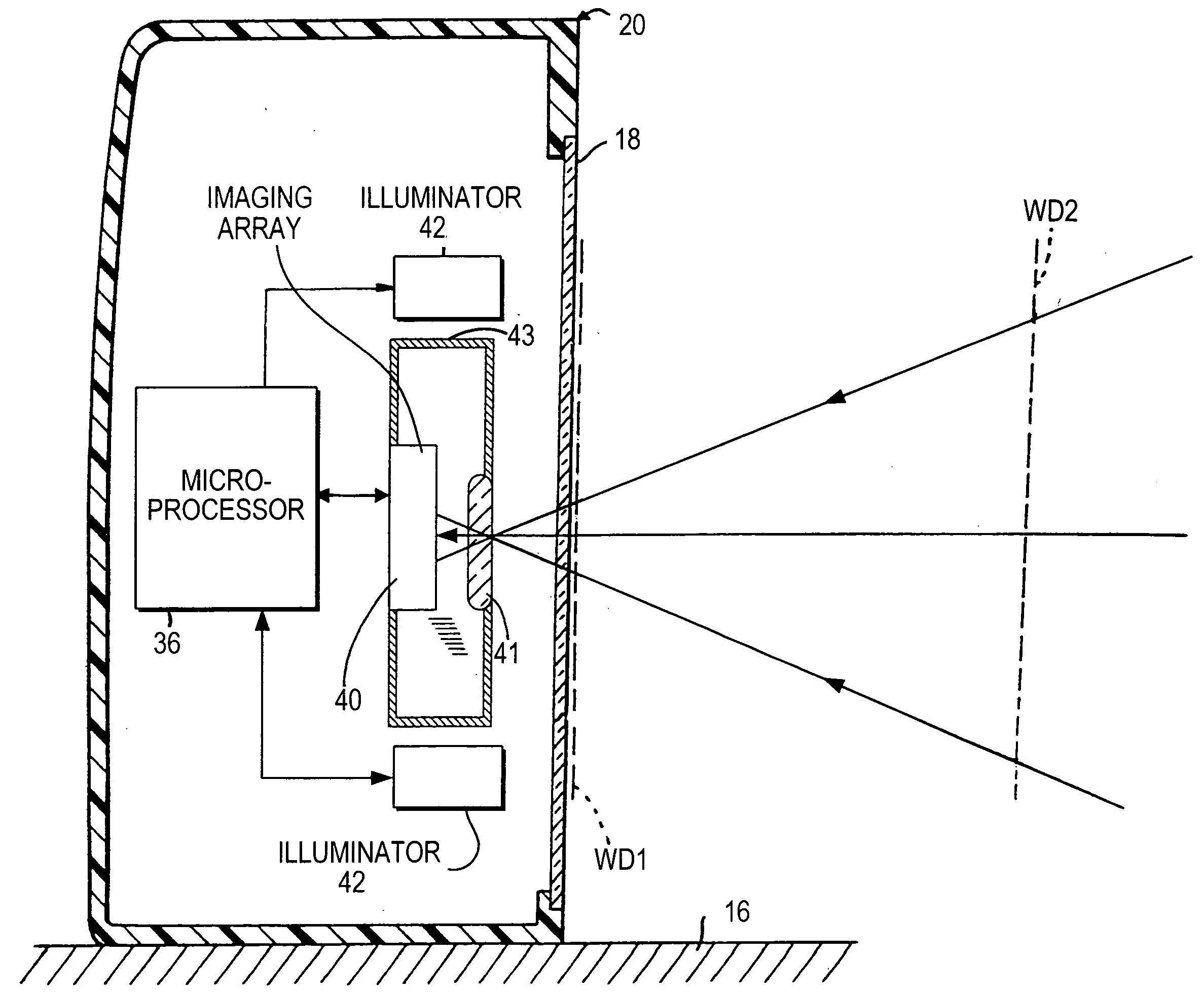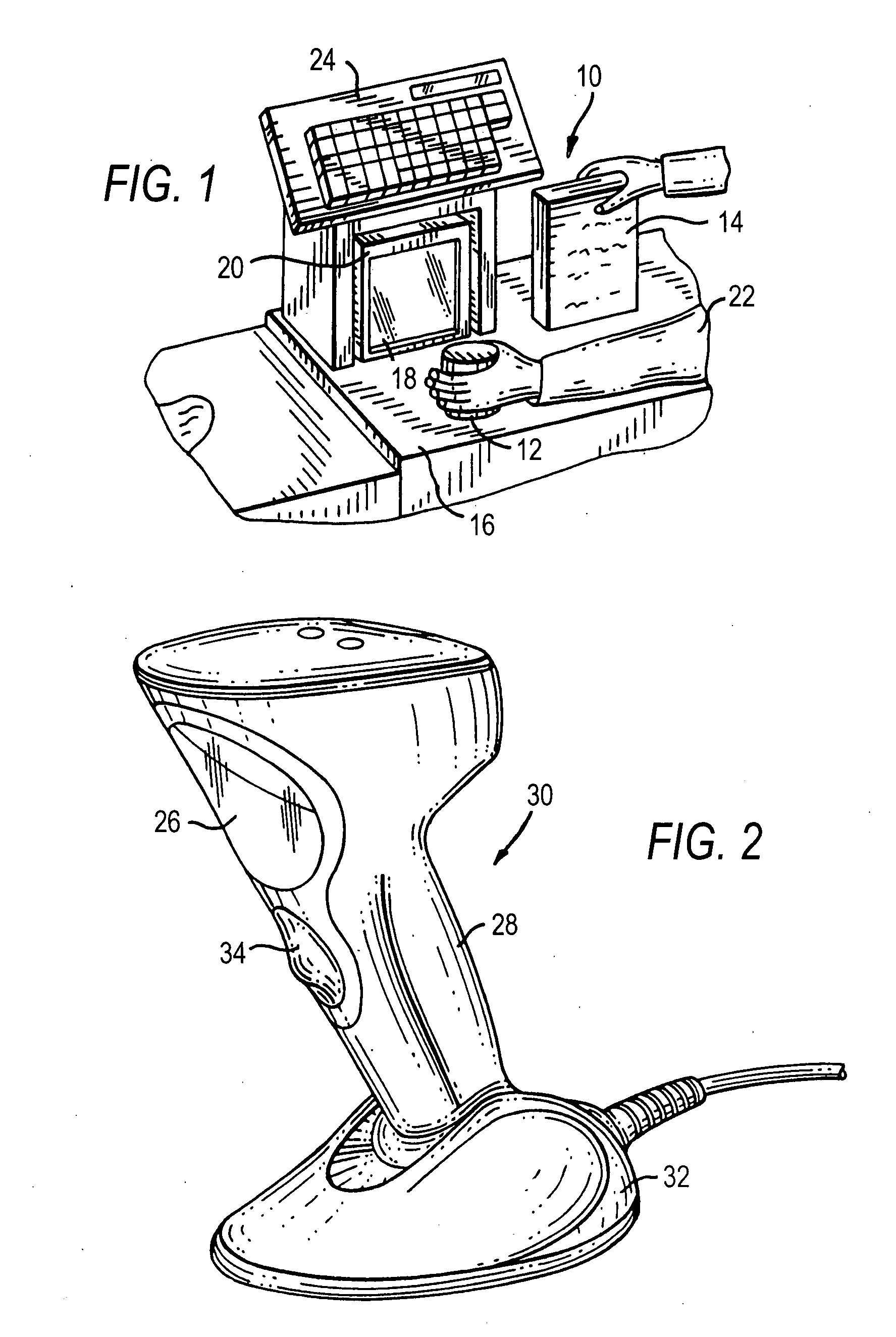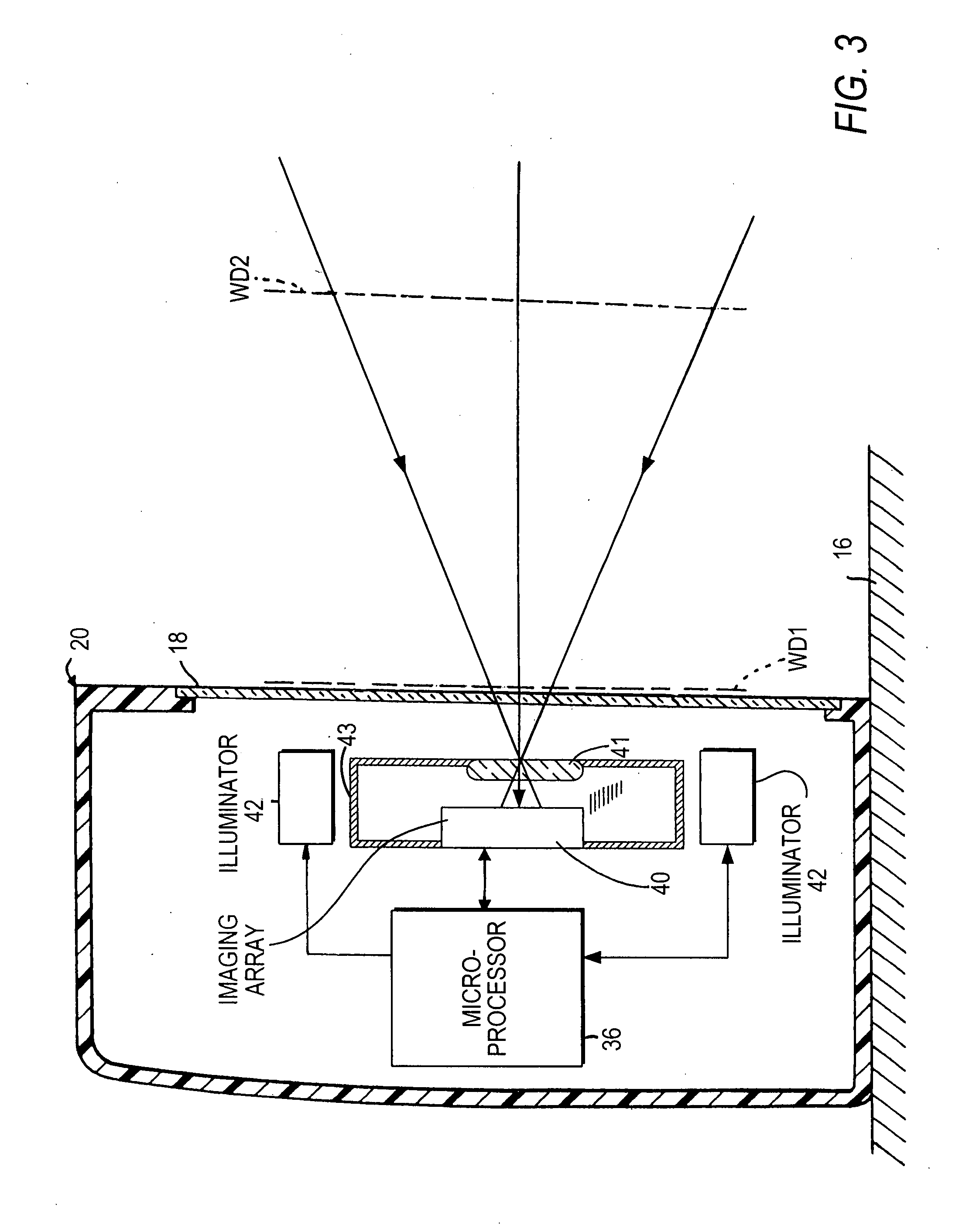Stray light reduction in imaging reader
a technology of imaging reader and stray light, which is applied in the field of stray light reduction in imaging reader, can solve the problems of ghost images, degrade the performance of readers, and reduce the contrast of the image of the symbol being read, so as to reduce the amount of stray light directed, the effect of brightening the intensity and shortening the tim
- Summary
- Abstract
- Description
- Claims
- Application Information
AI Technical Summary
Benefits of technology
Problems solved by technology
Method used
Image
Examples
Embodiment Construction
[0018]Reference numeral 10 in FIG. 1 generally identifies an electro-optical reader in a workstation mode for processing transactions and mounted on a checkout counter at a retail site at which products, such as a can 12 or a box 14, each bearing a target symbol, are processed for purchase. The counter includes a countertop 16 across which the products are slid at a swipe speed past a generally vertical window 18 of a box-shaped imaging reader 20 mounted on the countertop 16. A checkout clerk or operator 22 is located at one side of the countertop, and the reader 20 is located at the opposite side. A cash / credit register 24 is located within easy reach of the operator. The reader 20 is portable and lightweight and may be picked up from the countertop 16 by the operator 22, and the window 18 may be aimed at a symbol preferably on a product too heavy or too large to be easily positioned on the countertop in front of the reader in the workstation mode.
[0019]Reference numeral 30 in FIG....
PUM
 Login to View More
Login to View More Abstract
Description
Claims
Application Information
 Login to View More
Login to View More - R&D
- Intellectual Property
- Life Sciences
- Materials
- Tech Scout
- Unparalleled Data Quality
- Higher Quality Content
- 60% Fewer Hallucinations
Browse by: Latest US Patents, China's latest patents, Technical Efficacy Thesaurus, Application Domain, Technology Topic, Popular Technical Reports.
© 2025 PatSnap. All rights reserved.Legal|Privacy policy|Modern Slavery Act Transparency Statement|Sitemap|About US| Contact US: help@patsnap.com



